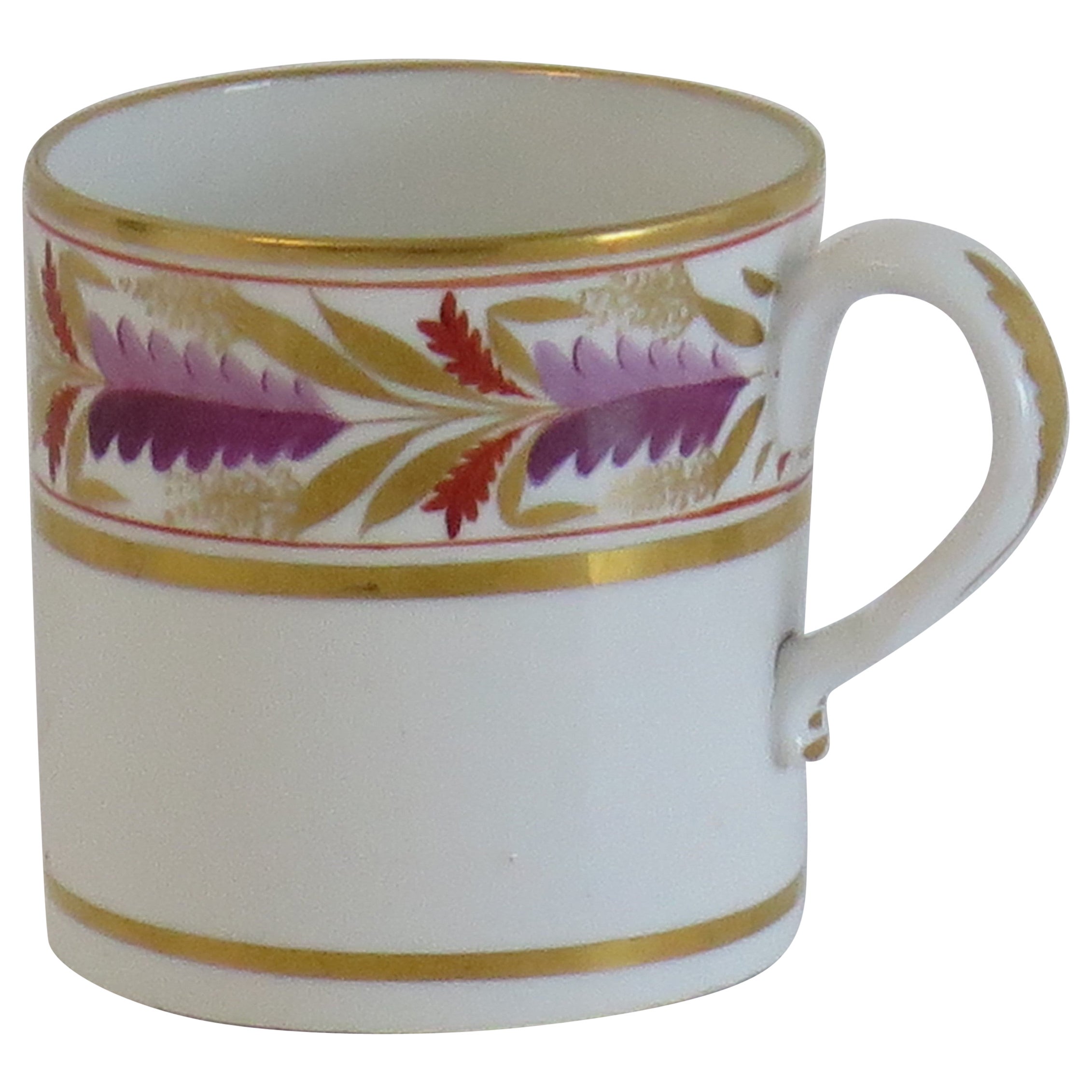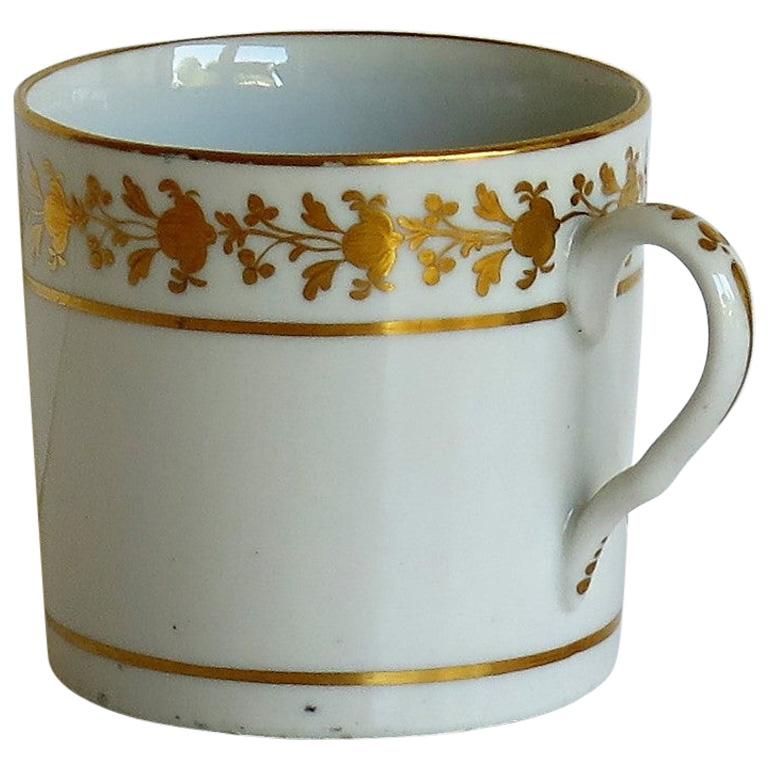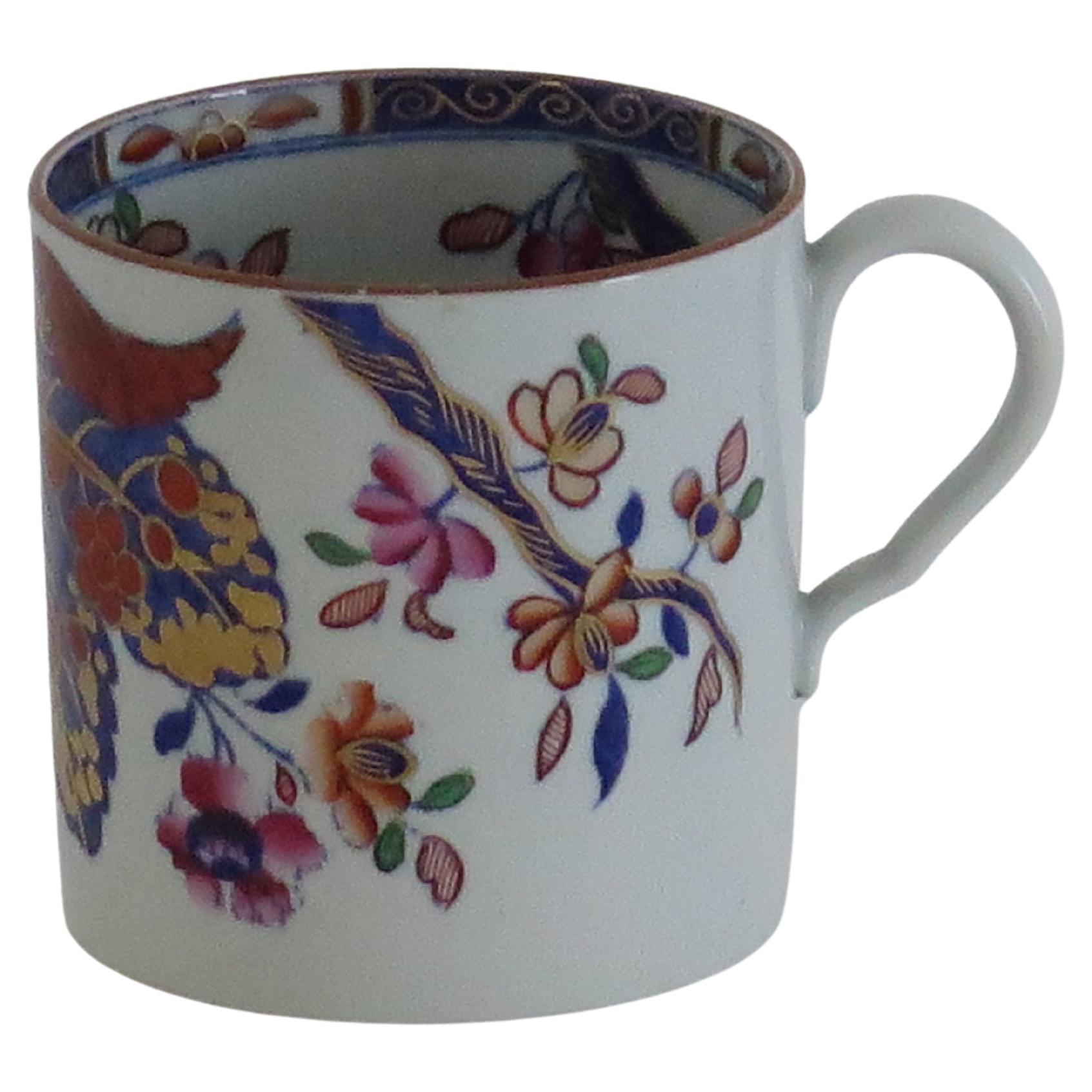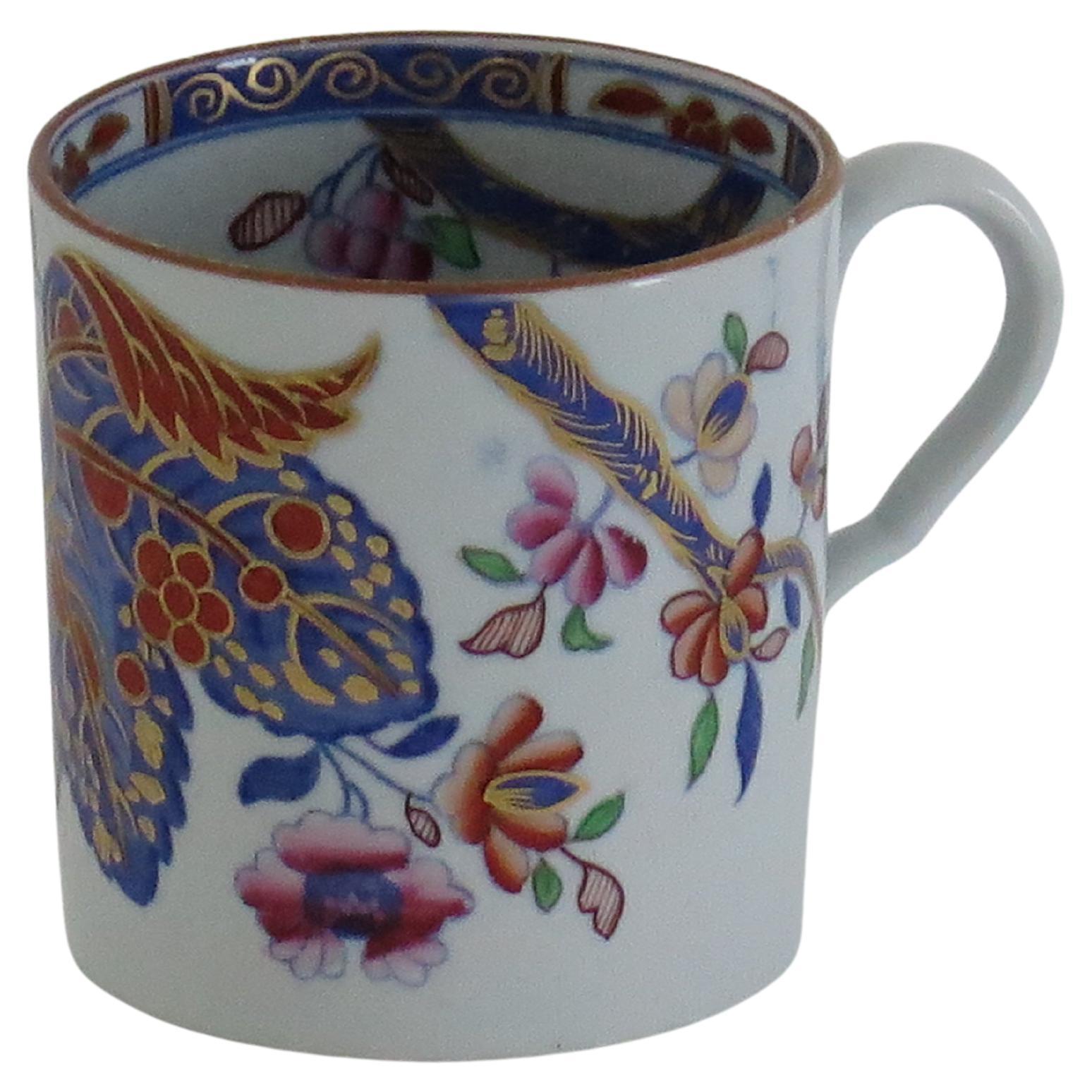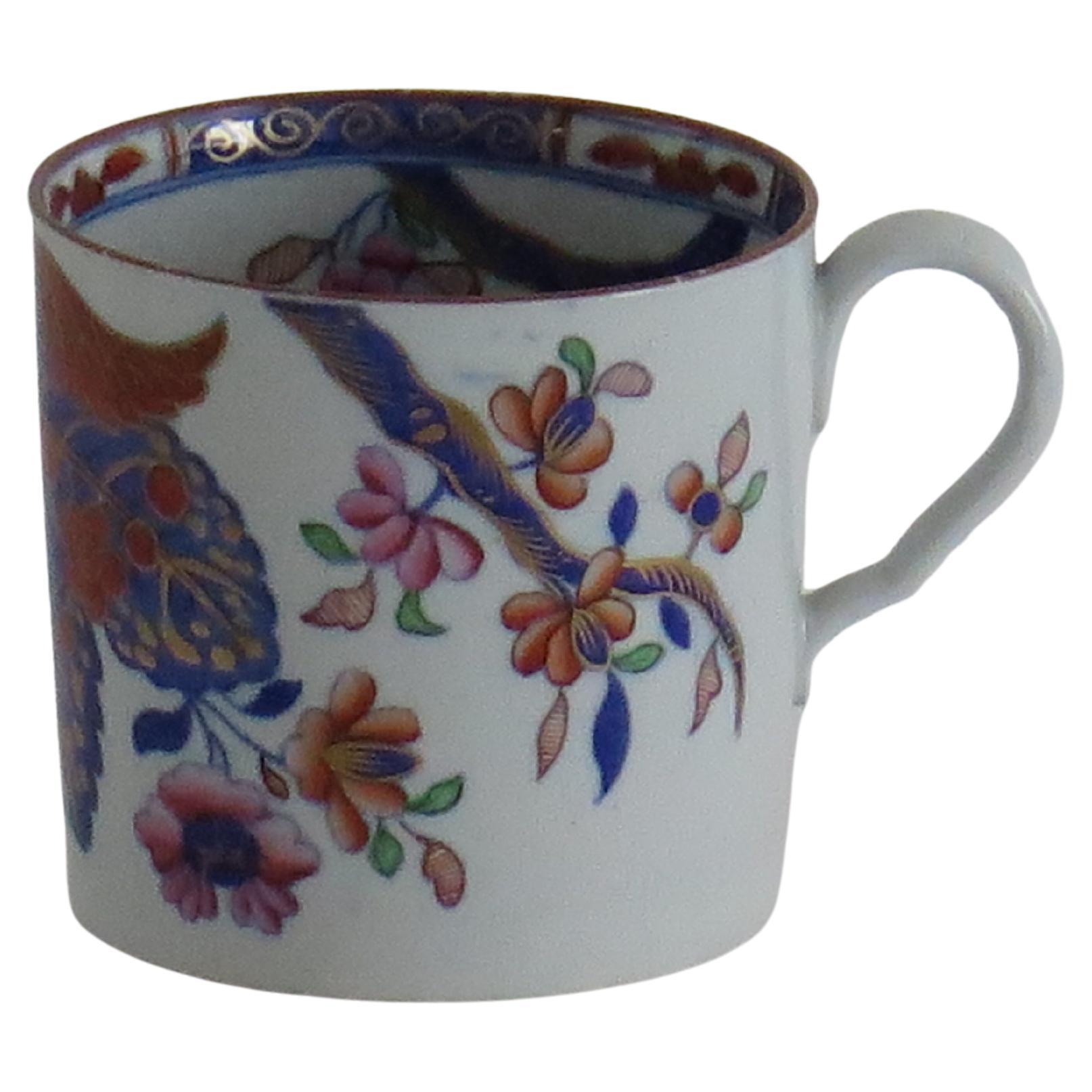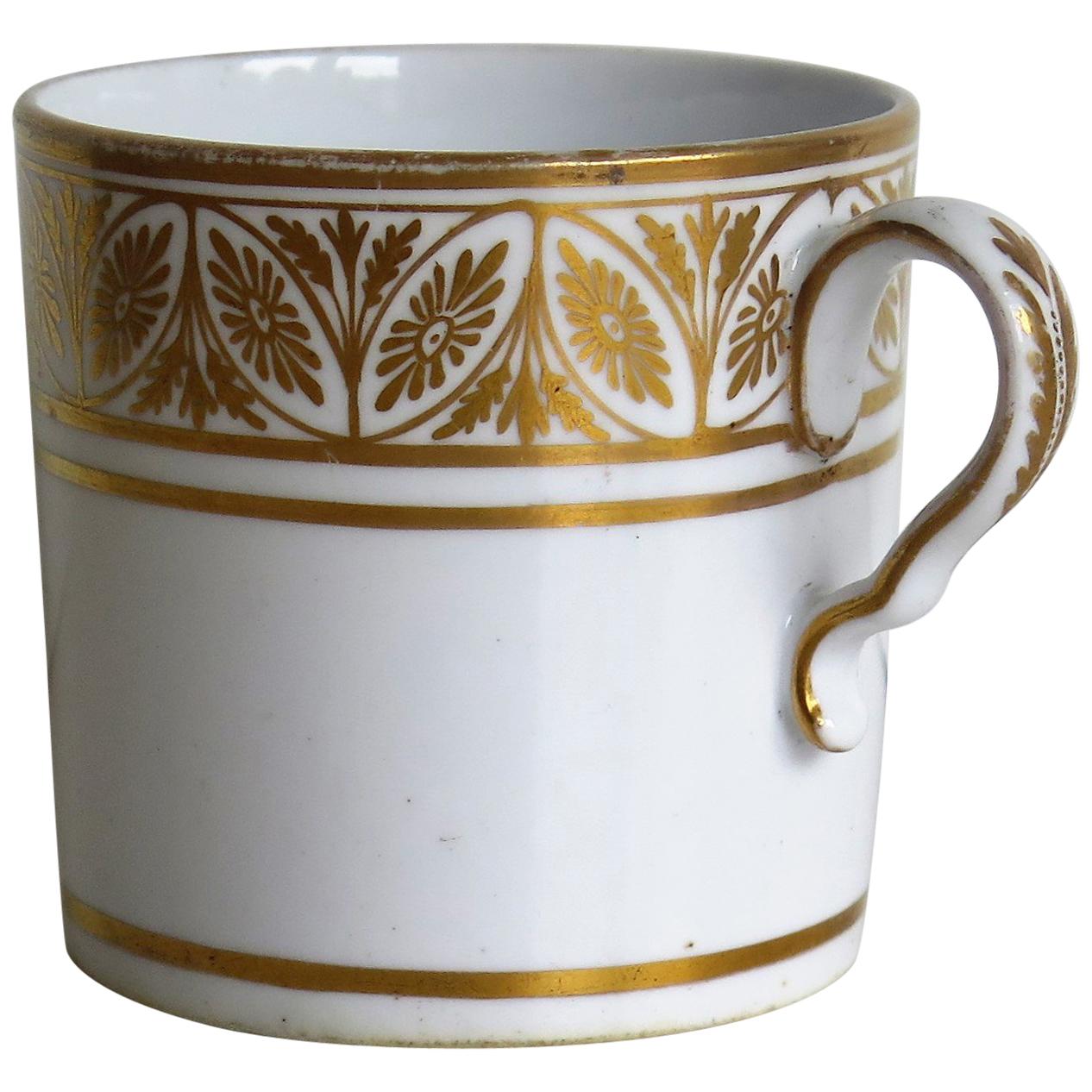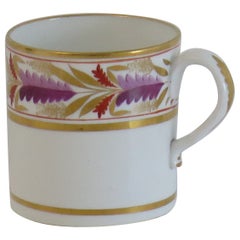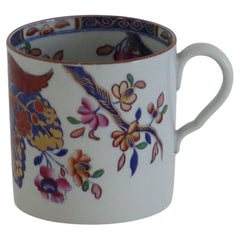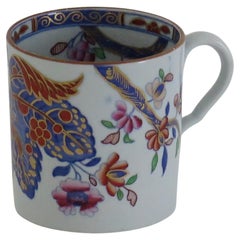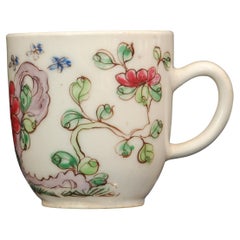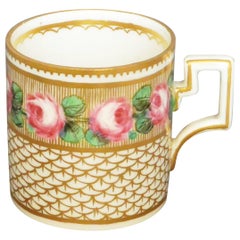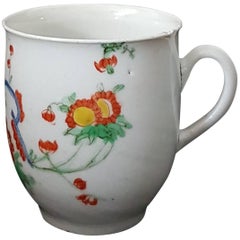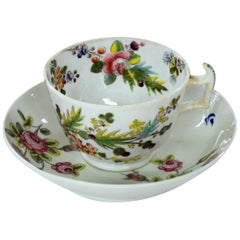Items Similar to Georgian Spode Coffee Can Porcelain Floral Leaf Gilded Pattern, circa 1810
Video Loading
Want more images or videos?
Request additional images or videos from the seller
1 of 17
Georgian Spode Coffee Can Porcelain Floral Leaf Gilded Pattern, circa 1810
$208.50
£150
€176.79
CA$283.45
A$317.50
CHF 165.07
MX$3,920.53
NOK 2,102.82
SEK 1,987.89
DKK 1,319.33
Shipping
Retrieving quote...The 1stDibs Promise:
Authenticity Guarantee,
Money-Back Guarantee,
24-Hour Cancellation
About the Item
This is a good quality porcelain coffee can that we attribute to Spode of Staffordshire, England, made during the very early 19th century, George 111rd period, circa 1810.
The coffee can is nominally parallel, with a loop handle having one lower kink, characteristic of the Spode handle. It has a fairly deep foot recess with obtuse corners and is unmarked to the base.
The pattern is one of Spode's transfer printed floral leaf designs in a burnt orange colour around the upper border, all between gold gilt rings with a further gold gilt ring just above the base and hand gilding to the outer handle.
We date this piece to the late George third period of the early 19th century, circa 1810.
- Attributed to:Spode (Manufacturer)
- Dimensions:Height: 2.57 in (6.53 cm)Width: 3.25 in (8.26 cm)Depth: 2.5 in (6.35 cm)
- Style:George III (Of the Period)
- Materials and Techniques:Porcelain,Glazed
- Place of Origin:
- Period:
- Date of Manufacture:circa 1810
- Condition:Wear consistent with age and use. Good antique condition. Some slight gilding loss around the upper rim. NO Damage. Please see images.
- Seller Location:Lincoln, GB
- Reference Number:Seller: P 17571stDibs: LU990325097172
About the Seller
5.0
Platinum Seller
Premium sellers with a 4.7+ rating and 24-hour response times
Established in 1993
1stDibs seller since 2013
1,389 sales on 1stDibs
Typical response time: <1 hour
Associations
LAPADA - The Association of Arts & Antiques Dealers
- ShippingRetrieving quote...Shipping from: Lincoln, United Kingdom
- Return Policy
Authenticity Guarantee
In the unlikely event there’s an issue with an item’s authenticity, contact us within 1 year for a full refund. DetailsMoney-Back Guarantee
If your item is not as described, is damaged in transit, or does not arrive, contact us within 7 days for a full refund. Details24-Hour Cancellation
You have a 24-hour grace period in which to reconsider your purchase, with no questions asked.Vetted Professional Sellers
Our world-class sellers must adhere to strict standards for service and quality, maintaining the integrity of our listings.Price-Match Guarantee
If you find that a seller listed the same item for a lower price elsewhere, we’ll match it.Trusted Global Delivery
Our best-in-class carrier network provides specialized shipping options worldwide, including custom delivery.More From This Seller
View AllGeorgian Spode Coffee Can Porcelain hand decorated & marked SPODE, circa 1810
By Spode
Located in Lincoln, Lincolnshire
This is a very good quality porcelain coffee can by Spode of Staffordshire, England, made during the very early 19th century, George 111rd period, circa 1805.
The coffee can is no...
Category
Antique Early 19th Century English George III Ceramics
Materials
Porcelain
Georgian Coalport Porcelain Coffee Can Hand Gilded Pattern, English circa 1807
By Coalport Porcelain
Located in Lincoln, Lincolnshire
This is a good quality coffee can that we attribute to the Coalport Porcelain works, Shropshire, England, made during the John Rose period of the George 111rd years, circa 1805-1810.
The coffee can is nominally parallel, tapering slightly to the base, with a simple loop handle with one lower kink and pointed attachments. It has a shallow foot recess with obtuse corner and is unmarked to the base.
The pattern is beautifully hand painted in an all gold gilt floral upper border pattern with further gilding on the body above the base rim, around the upper rim and to the outer handle.
We date this piece to the late George third...
Category
Antique Early 19th Century English George III Ceramics
Materials
Porcelain
Georgian Spode Stone China Coffee Can (A)Tobacco Leaf Pattern 2061, circa 1820
By Spode
Located in Lincoln, Lincolnshire
This is a very good stone China (Ironstone) coffee can hand painted in the tobacco leaf pattern, number 2061, made by the Spode factory in the early 19th century, English Georgian period, circa 1820.
This coffee can or cup made from Ironstone China is beautifully decorated with hand painted enamels in the very distinctive tobacco leaf pattern, pattern number 2061. The decoration also has very good hand gilded detailing. The upper rim has a dark ochre brown hand painted finish in the manner of 18th C...
Category
Antique Early 19th Century English Chinoiserie Ceramics
Materials
Ironstone
Georgian Spode Stone China Coffee Can (B)Tobacco Leaf Pattern 2061, circa 1820
By Spode
Located in Lincoln, Lincolnshire
This is a very good stone China (Ironstone) coffee can hand painted in the tobacco leaf pattern, number 2061, made by the Spode factory in the early 19th century, English Georgian period, circa 1820.
This coffee can or cup made from Ironstone China is beautifully decorated with hand painted enamels in the very distinctive tobacco leaf pattern, pattern number 2061. The decoration also has very good hand gilded detailing. The upper rim has a dark ochre brown hand painted finish in the manner of 18th C...
Category
Antique Early 19th Century English Chinoiserie Ceramics
Materials
Ironstone
Georgian Spode Stone China Coffee Can (C)Tobacco Leaf Pattern 2061, circa 1820
By Spode
Located in Lincoln, Lincolnshire
This is a very good stone China (Ironstone) coffee can hand painted in the tobacco leaf pattern, number 2061, made by the Spode factory in the early 19th century, English Georgian pe...
Category
Antique Early 19th Century English Chinoiserie Ceramics
Materials
Ironstone
Early 19th Century Spode Porcelain Coffee Can All Hand Gilt Pattern, circa 1810
By Spode
Located in Lincoln, Lincolnshire
This is a good example of an English George III period, porcelain, coffee can (cup), made by Spode in the early 19th century, circa 1810.
The can is nominally straight sided and h...
Category
Antique Early 19th Century English Regency Ceramics
Materials
Porcelain
You May Also Like
Coffee Cup with Famille Rose decoration, Bow Porcelain, circa 1750
By Bow Porcelain
Located in Melbourne, Victoria
A direct copy of a Chinese shape, decorated with chinoiserie painting of typical motifs in the famille rose palette.
Category
Antique Mid-18th Century English Chinoiserie Porcelain
Materials
Porcelain
Italian Gilt Porcelain Cup
By Real Fabbrica Ferdinandea 1
Located in New York, NY
Italian gilt porcelain cup. Real Fabbrica Ferdinandea hand-painted demitasse cup with rose painted surround above a gilt fish-scale. Band with gilt rim ...
Category
Antique Late 18th Century Italian Serving Pieces
Materials
Porcelain
Coffee Cup, Kakiemon Decoration, Plymouth, circa 1769
By Plymouth Porcelain Factory 1
Located in Melbourne, Victoria
Coffee cup in hard-paste porcelain, decorated with Kakiemon painting. The fruits of the Plymouth factory are perhaps the first examples of hard-paste porc...
Category
Antique Mid-18th Century English Japonisme Porcelain
Materials
Porcelain
$1,360 Sale Price
20% Off
English Early 19th Century New Hall Porcelain Floral Decor Cup and Saucer
By New Hall
Located in CHARLESTON, SC
Rare and fine antique English new hall porcelain floral decor cup and saucer
Rare printed mark on saucer. Pristine condition. Colors are still vibrant.
Saucer: 5 1/2" D x 1 1/4" ...
Category
Antique Early 19th Century English George III Porcelain
Materials
Porcelain
Antique Spode Dollar Pattern Coffee Cups, Set of 9, English Porcelain Circa 1820
By Spode
Located in Katonah, NY
Perfect for a double espresso!
These nine "Dollar" pattern porcelain coffee cups are handpainted in the exquisite "Dollar" pattern.
Spode made this set in England circa 1820.
The dec...
Category
Antique Early 19th Century English Regency Tea Sets
Materials
Porcelain
Old Paris Porcelain Gilt & Floral Enamel Hand Painted Coffee & Tea Service Set
By Old Paris
Located in Atlanta, GA
Beautiful hand-painted porcelain made in France
Tea Service for 6
Tea Cups and Saucers
Creamer & Sugar
Bowl
Large Tea Pot
Small Tea Pot
Largest Piece measures 10" wide on t...
Category
Antique 19th Century French Victorian Tea Sets
Materials
Enamel
